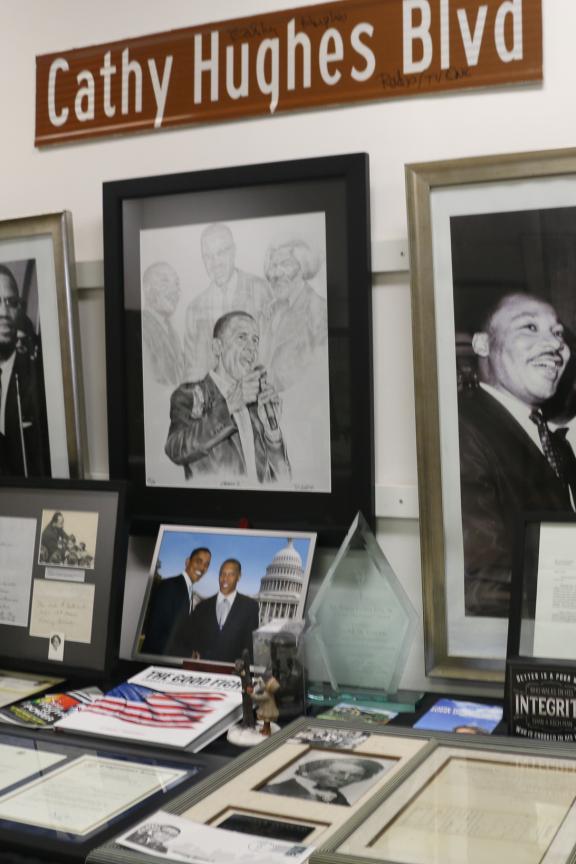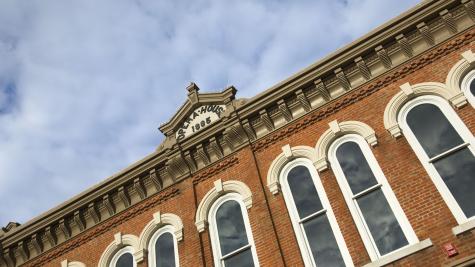
Celebrate Black History Month in Nebraska
This collection of historical sites and museums honors the monumental events, places and people who paved the way for Black Americans in Nebraska.
Malcolm X House Site, Omaha
In 1925, Malcolm X (born Malcolm Little) was born on this Omaha site, in a now-demolished house. During the civil rights movement, he was a prominent American Muslim minister and human rights activist. Today, the Malcolm X Foundation owns the 17 acres surrounding where baby Malcolm once lived and is building a space to be used for international education and entertainment. Malcom X was recently selected to the Nebraska Hall of Fame, and a bust of him was added to the State Capitol in 2024.

Great Plains Black History Museum, Omaha
The Great Plains Black History Museum’s mission is, “To preserve, celebrate and educate all people of the contributions and achievements of African Americans throughout the great plains of America.” Visit Omaha to browse the state's only museum focused on African American history.

Collection Museum, Falls City
This museum is on the site of the Dorrington Home (burned down in 1877), the Falls City family provided shelter for escaped slaves prior to the Civil War and was a key stop for slaves escaping Missouri and Kansas. In 2022, the ground was added to the National Park Service’s National Underground Railroad “Network to Freedom” program and a plaque was installed. There is also a storefront display at the museum sharing the Dorrington story.
Stromsburg Cemetery, Stromsburg
The grave of George Flippin, the first Black football player for the University of Nebraska, can be found in Stromsburg. Born to freed slaves, Flippin played for the Bugeaters in the 1890s. He would go on to become a well-respected doctor in the Stromsburg area. He built the towns first hospital, which is now the local Scandinavian Inn B&B.
You can learn more about Flippin and his family at the Nebraska History Museum in Lincoln.

Fort Robinson State Park, Crawford
A notable role was played by the Ninth Cavalry Regiment during the early years of the 20th century, as Black soldiers dominated the ranks at Fort Robinson near the town of Crawford. The first Black chaplain in the regular army and the second African American graduate of West Point served here: Lt. John Alexander and Henry Plummer. Among Native Americans, these militias were referred to as Buffalo Soldiers, a nickname that became a source of pride.

Dobby’s Frontier Town, Alliance
The second original home of Robert “Bob” Anderson is now part of Dobby’s Frontier Town in Alliance. Anderson was born into slavery and after the Civil War became Nebraska’s first Black homesteader in 1870. In 1927 Anderson released "From Slavery to Affluence," an autobiography his young wife helped him pen about his hardships and what it took to eventually find success as a Black rancher in Box Butte County.

DeWitty, Cherry County
In the first decades of the 1900s, DeWitty, named after a local Black business owner, was home to the largest populations of African Americans who homesteaded in Nebraska. By 1920, these families had claimed over 40,000 acres, but by 1936 the town was renamed and disincorporated. Today, a Nebraska State Historical Society roadside marker on U.S. Highway 83 in Cherry County commemorates the DeWitty settlement, and the Descendants of DeWitty is an active group sharing their ancestor’s story.

Love history? Discover Nebraska’s rich heritage with Wander Nebraska, your guide to exploring historic landmarks and cultural attractions across the state.


